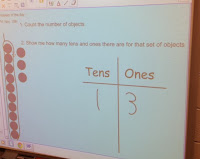- Discussing
- Debating
- Asking and answering questions
- Discovering patterns
- Selecting their work from a range of choices
A lesson in which students are engaged usually has a discernible structure: a beginning, a middle, and an end, with scaffolding provided by the teacher or by the activities themselves. Student tasks are organized to provide cognitive challenge, and then students are encouraged to reflect on what they have done and what they have learned. Lessons have closure, in which teachers encourage students to derive the important learning from the tasks, discussions, and/or reading that they have done.
The elements of 3c are:
The elements of 3c are:
- Activities and assignments
- The activities and assignments are the centerpiece of student engagement, since they determine what it is that students are asked to do. Activities and assignments that promote learning require student thinking that emphasizes depth over breadth and encourage students to explain their thinking.
- Grouping of students
- How students are grouped for instruction is one of the many decisions teachers make every day. There are many options: students of similar background and skill may be clustered together, or students may be in mixed groups. Alternatively, a teacher might form groups randomly or let students choose.
- Instructional materials and resources
- The instructional materials a teacher selects to use in the classroom can have an enormous impact on students' experience. Though some curriculums and resources are in place, teacher use these responsively or supplement them with others of their choosing that are better suited to engaging students in deep learning (i.e. primary source materials in social studies).
- Structure and pacing
- No one likes to be bored or rushed in completing a task. Keeping things moving, within a well-defined structure, is one of the marks of an experienced teacher. Since much of student learning results from their reflection on what they have done, a well-designed lesson includes time for reflection and closure.
 |
| Lisa reflects with Level 1 students in a community circle after a science experience. |
In a proficient classroom...
The learning tasks and activities are fully aligned with the instructional outcomes and are designed to challenge student thinking, inviting students to make their thinking visible. This technique results in active intellectual engagement by most students with important and challenging content and with teacher scaffolding to support that engagement. The groupings of students are suitable to the activities. The lesson has a clearly defined structure, and the pacing of the lesson is appropriate, providing most students the time needed to be intellectually engaged.
What does this look like?
- Students are asked to formulate a hypothesis about what might happen if the American voting system allowed for the direct election of presidents and to explain their reasoning.
- Students are given a task to do independently, then to discuss with a table group, followed by reporting from each table.
- Students are asked to create different representations of large numbers using a variety of manipulative materials.

In a distinguished classroom...
Virtually all students are intellectually engaged in challenging content through well-designed learning tasks and activities that require complex thinking by students. The teacher provides suitable scaffolding and challenges students to explain their thinking. There is evidence of some student initiation of inquiry and student contributions to the exploration of important content; students may serve as resources for one another. The lesson has a clearly defined structure, and the pacing of the lesson provides students with the time needed not only to intellectually engage with and reflect upon their learning but also to consolidate their understanding.
What does this look like?
- Students determine which of several tools (protractor, spreadsheet, or graphing calculator) would be most suitable to solve a math problem.
- A student asks whether they might remain in their small groups to complete another section of the activity, rather than working independently.
- Students identify or create their own learning materials.
- Students summarize their learning from a lesson.
Things to reflect on:
- What am I asking the students to do?
- Do the learning tasks involved higher level thinking?
- Are students challenged to identify patterns or make predictions?
- Are students answering open-ended questions or questions with one answer?
- What are students saying and doing?
- Are students "minds-on" or just "hands-on"?
Comment question:
How will you relax and refresh over the Thanksgiving break?








.JPG)
